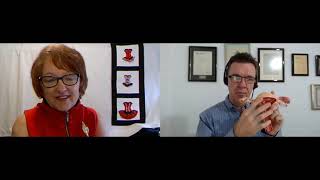Over the next week I am going to focus on a very serious subject – Cancers in women.
Having recently focusses on the awareness of endometriosis and adenemyosis, I thought I should bring some awareness to the topic of cancers in women as a whole. This isn’t to scare people either. It is to bring awareness to a very serious topic and to help people understand the importance of early intervention and changes to diet and lifestyle can greatly reduce the risks of this horrible disease.
With cancer rates increasing I am going to focus on the cancers that affect the female reproductive system and impact of reproductive health. This will also include those cancers that increase after menopause too. Whenever I talk about fertility and reproduction, it is referring to the stage in life when women are fertile and are of reproductive age. Menopause is also including because that still comes under the reproductive system.
Cancer has been around a long time
Humankind has been dealing with the impact of cancer and malignancy for its entire history and the first clear description of any cancer is found in the Ebers Papyrus, dating from nearly 3500 years ago. The cancer was very accurate described by the Egyptian writer and what was described was in fact breast cancer. Chinese Medicine has texts dating back for further than that, describing the different forms of cancers and their treatments. Modern medicine does tend to only reference Greek, Egyptian and Roman text.
When these Greek physicians first cut the surface of a breast cancer, it did in fact resemble a crab, because of it solid central body, with extensions into the surrounding tissue resembling legs.
The ancient Greek word for crab is “Karkinos” which in Latin is translated into ‘cancer’- as in the astrological sign. This term was then extended into all cancers and malignancies, not just breast cancer.
Genetic, hereditary and hormonal links to cancer
It is believed that cancer is predominantly caused by a failure in the regulation of genes which govern cell growth and differentiation. Malignant change is most typically the result of a cascade of changes in a number of genes.
These changes in genes can be bought on by hereditary genetic genetic changes, while others may be the incorporation of foreign viral DNA, or a compound that may act as the primary trigger for malignant change. Some cancers and malignancies are also caused by hormonal stimulation both internally and by injection, or ingestion of hormones from an outside source (Drugs, Hormone Replacement etc).
Diet and lifestyle links to cancer
Other cancers are plain and simply caused by the highly inflammatory foods we eat and the lifestyle we live. Obesity and being overweight increases our cancer risks and there are no many studies proving these links. Having excess fat stores, eating highly processed foods, high GI foods and over 3-4 glasses of alcohol per week can increase your cancer risks exponentially. This why we all need to adopt a clean eating approach to foods and look at eating less refined foods and more whole foods.
The incidence of cancers in women is highest in developing western countries and lowest in countries such as Africa and Asia. The difference has more to do with diet than it does genetics. Since there is compelling evidence that alcohol, highly refined foods and obesity increase the risk of cancers in women (and men) I will be focusing greatly on the need for us all to look at changing our diets to not only help in the prevention of certain cancers, but to also help prevention of other disease states that are leading causes of our lives being cut short.
The most common cancer in women
Since breast cancer remains the most common malignancy in women, comprising of 18% of all female cancers, most women will know someone who has had this diagnosis.
I’ll focus on breast cancer firstly and then go into the other cancers so that we can all be educated about how we can prevent these disease states from increasing. If you have any questions, or topics you want discussed around this topic, please let me know
Take care and remember prevention is better than cure. Always talk to your doctor, or healthcare practitioner about cancer risks and always seek early intervention if you find any lumps and bumps that were not there before.
Hope you the topics help you all. If I can save just one person with this information, then I am happy. Lets try and save more than one, so please like and share to spread the word.
Regards
Andrew Orr
-No Stone Left Unturned
-Master of Women’s Health Medicine
-The Women’s Health Experts

